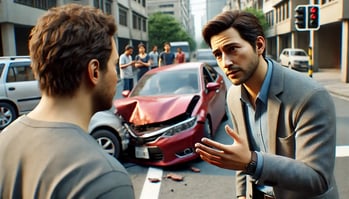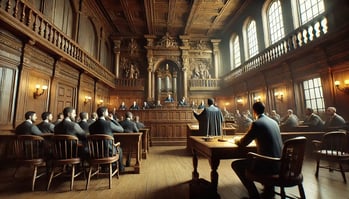What happens if both drivers are at fault in an accident?
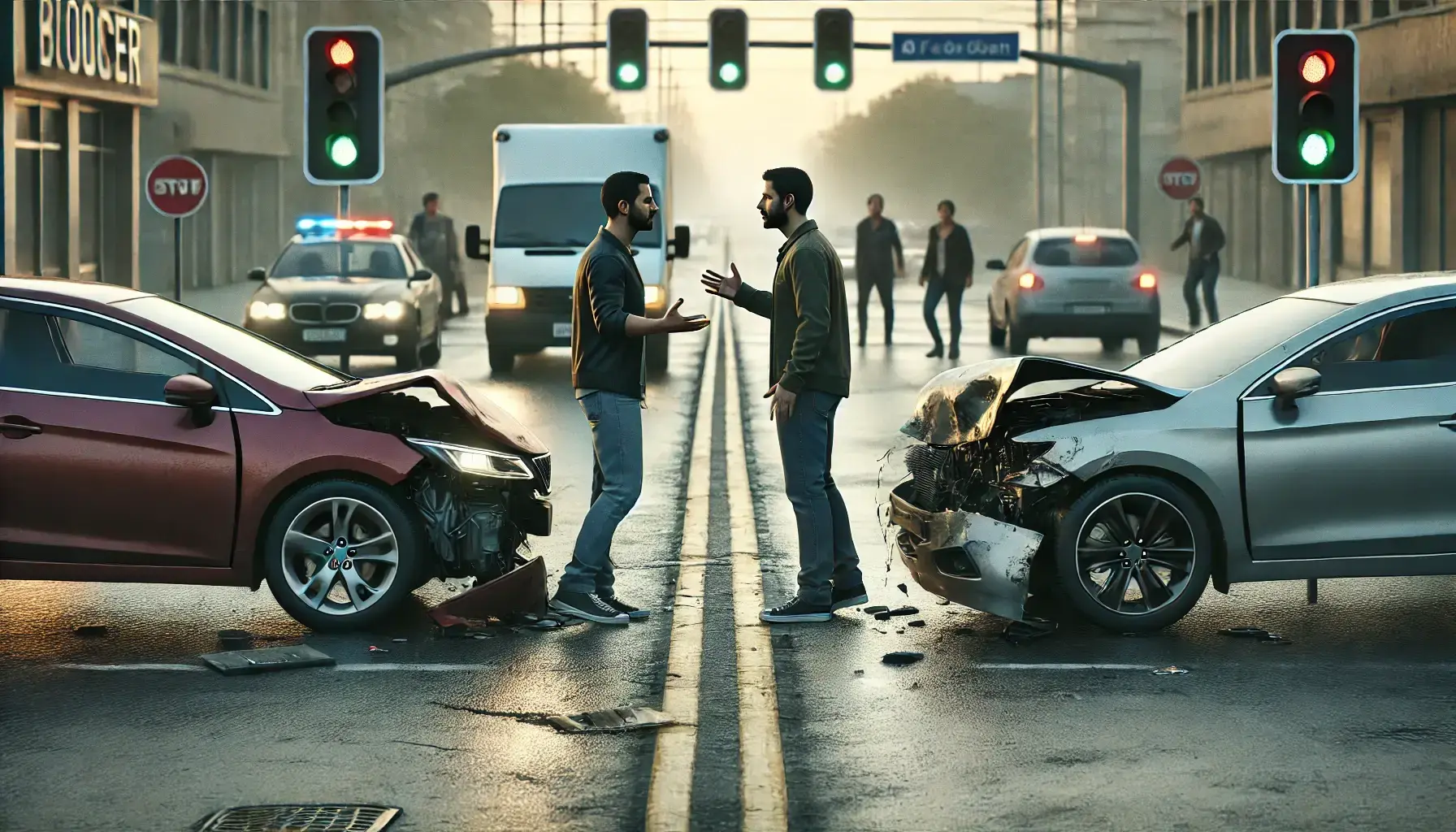
Legally reviewed by:
Daniel Smith August 29, 2024
With many accidents, one of the involved drivers was likely responsible. A clear example of one of the parties bearing fault is when an intoxicated driver runs the red light at an intersection and T-bones a driver with the right of way.
However, fault does not always rest on just one party. Both parties could be responsible for an accident, albeit in different proportions. When a driver trying to change lanes on a freeway crashes into another driver going over the speed limit, the driver changing lanes may be more responsible for the accident (especially if they didn’t use their turn signals).
However, the over-speeding driver will also bear some fault because they may have been able to avoid the accident if they had gone at the speed limit.
Both drivers involved in the accident could also be equally responsible. For example, if both drivers in our first intersection scenario were running red lights and got into a crash, they would both be equally responsible.
You’re likely aware that the at-fault driver will also bear financial responsibility for the damages and injuries resulting from an accident in most instances. But what happens when both drivers are at fault? The answer to that will depend on what state you’re in.
Different states have different negligence laws that determine the implications of shared-fault accidents. These laws impact the outcome of insurance settlements and lawsuits. In this article, we examine these different laws, insurance implications, and legal consequences.
Legal Framework of Shared Fault
Negligence laws form the legal framework of shared fault accidents. These laws are heavily influenced by one of two legal rules: contributory or comparative negligence.
Contributory Negligence
This is an all-or-nothing rule, and as the name implies, it hinges on whether both parties contributed to the accident. It provides that a driver will not be entitled to compensation for an accident if they bore any responsibility. It is practiced in Alabama, Maryland, North Carolina, Virginia, and the District of Columbia.
In Jackson v. Waller 410 So.2d 98 (Ala. Civ. App. 1982), an Alabama case, both drivers were driving in opposite directions, and as they approached a street intersection, Jackson turned left onto the lane Waller was on.
In response, Waller used his brakes, swerved right, and hit a telephone pole. Waller sued Jackson for damages to his car, and the court held that contributory negligence would be a valid defense for Jackson according to Rule 8(c) of Alabama’s Rules of Civil Procedure.
Similarly, in Harrison v. Montgomery County. Bd. of Educ., 295 Md. 442, (Md. 1983), although not a car accident case, a Maryland court reaffirmed that contributory negligence will bar recovery in Maryland. The court also rejected arguments urging it to adopt comparative negligence standards.
All states that practice contributory negligence have similar laws, either through cases or codes. In these states, when both drivers are at fault, neither is entitled to anything from the other. Each party will have to bear its injuries and/or damages.
The essential interpretation of this principle for car accidents is that even if one driver is 99% responsible for the accident, the other driver, who's 1% at fault, will not be allowed to recover damages from the first driver. The doctrine of contributory negligence will be a valid defense for the defendant.
Due to the strict nature of this rule, most of these states allow the last clear chance doctrine to be raised as an exception to contributory negligence. The doctrine provides that if the defendant (the person with most of the fault) had the last clear chance to avoid the accident, the plaintiff may be able to recover damages.
Comparative Negligence
Under this legal framework, drivers are blamed in proportion to their fault for the accident. The proportion of assigned blame will then determine how much they can recover.
To illustrate, let’s assume driver A suffers injuries in an accident with driver B, and their medical expenses total $50,000. A then sues B to recover the $50,000. Where comparative negligence is followed, B can raise it as a defense to reduce the amount he will be liable for.
If B raises it as a defense, the court (likely through a jury) will determine to what extent each party should bear responsibility based on the facts. If it is decided that A is 40% responsible while B is 60% responsible, B will only be liable to pay $30,000 (60% of $50,000).
In practice, there are two types of comparative negligence across the U.S:
Pure comparative negligence
Pure comparative negligence states allow drivers in an accident to claim damages as long as they are not entirely responsible for the accident. This means that even if driver A is 99% at fault, he would still be allowed to recover damages from driver B for the 1% of the accident he wasn't responsible for.
Alternatively, driver A will be allowed to raise comparative negligence as a defense to reduce their financial liability by 1% if he gets sued by driver B.
In Florida, Fla. Stat. § 768.81(2) provides that fault chargeable to a plaintiff will diminish the amount awarded as economic and noneconomic damages but will not bar recovery.
Similarly, Mississippi’s Miss. Code § 11-7-15 states that the fact that the person injured is guilty of contributory negligence will not bar recovery, but damages will be diminished by a jury in proportion to the amount of negligence the person is guilty of in personal injury lawsuits.
Ten other states have similar laws that establish the practice of pure comparative negligence, and they are:
- Alaska
- Arizona
- California
- Kentucky
- Louisiana
- Missouri
- New Mexico
- New York
- Rhode Island
- Washington
Modified comparative negligence
Unlike pure comparative negligence, states that practice modified comparative negligence bar damages recovery if a plaintiff was primarily or equally responsible for the accident. If a plaintiff qualifies for recovery but still bears some fault, the damages they should be entitled to will be reduced according to their fault for the accident.
However, there's a difference in the operation of this principle among modified comparative negligence states because some adopt the 51% bar, while others use the 50% bar.
The 51% bar will stop a plaintiff from recovering damages if they are determined to be 51% or more at fault. This means plaintiffs will not be entitled to compensation if they bear greater fault than the other party or all the other parties combined.
The 51% bar is followed in Connecticut, where Conn. Gen. Stat. § 52-572h (b) provides that contributory negligence will not bar recovery as long as the negligence is not greater than the combined negligence of the party or parties against whom recovery is sought.
It is also followed in Michigan according to Mich. Comp. Laws § 600.2959, which provides that economic and noneconomic damages shall not be awarded if a person’s fault is greater than the aggregate fault of the other person or persons.
21 other states that adopt the 51% bar for modified comparative negligence are:
- Delaware
- Hawaii
- Illinois
- Indiana
- Iowa
- Massachusetts
- Michigan
- Minnesota
- Montana
- New Hampshire
- New Jersey
- Ohio
- Oklahoma
- Oregon
- Pennsylvania
- South Carolina
- Texas
- Vermont
- West Virginia
- Wisconsin
- Wyoming
Meanwhile, the 50% bar will prevent a plaintiff from recovering damages if they are found to be 50% or more responsible for the accident. A plaintiff equally responsible or bearing more responsibility for an accident will not be allowed to rely on the comparative negligence defense or even receive any damages for injuries resulting from that accident.
The 50% principle is followed in Georgia, where Ga. Code § 51-12-33(g) states that a plaintiff shall not be entitled to any damages if the party is 50 percent or more responsible for the injury or damages claimed. Ga. Code § 51-11-7 also states that if a plaintiff could have avoided the consequences suffered from the defendant's negligence by ordinary care, he is not entitled to recover.
In the same vein, Utah’s Utah Code § 78B-5-818(2) bars a person from seeking recovery if the fault of the defendant or group of defendants does not exceed the fault of the person seeking recovery. Apart from Georgia and Utah, eight states also follow the 50% bar rule:
- Arkansas
- Colorado
- Idaho
- Kansas
- Maine
- Nebraska
- North Dakota
- Tennessee
Finally, it is vital to mention that while South Dakota also follows the modified comparative negligence principle, it does not use the 50% or 51% bar to prevent recovery.
Instead, S.D. Codified Laws § 20-9-2 only provides that contributory negligence will not bar recovery where the contributory negligence is slight in comparison to that of the defendant. It further provides that the comparison of negligence shall be made without disclosing any determination of the percentage of fault.
What does it then mean for negligence to be slight? It is likely the opposite of the other party's gross negligence.
Determining Fault in Accidents
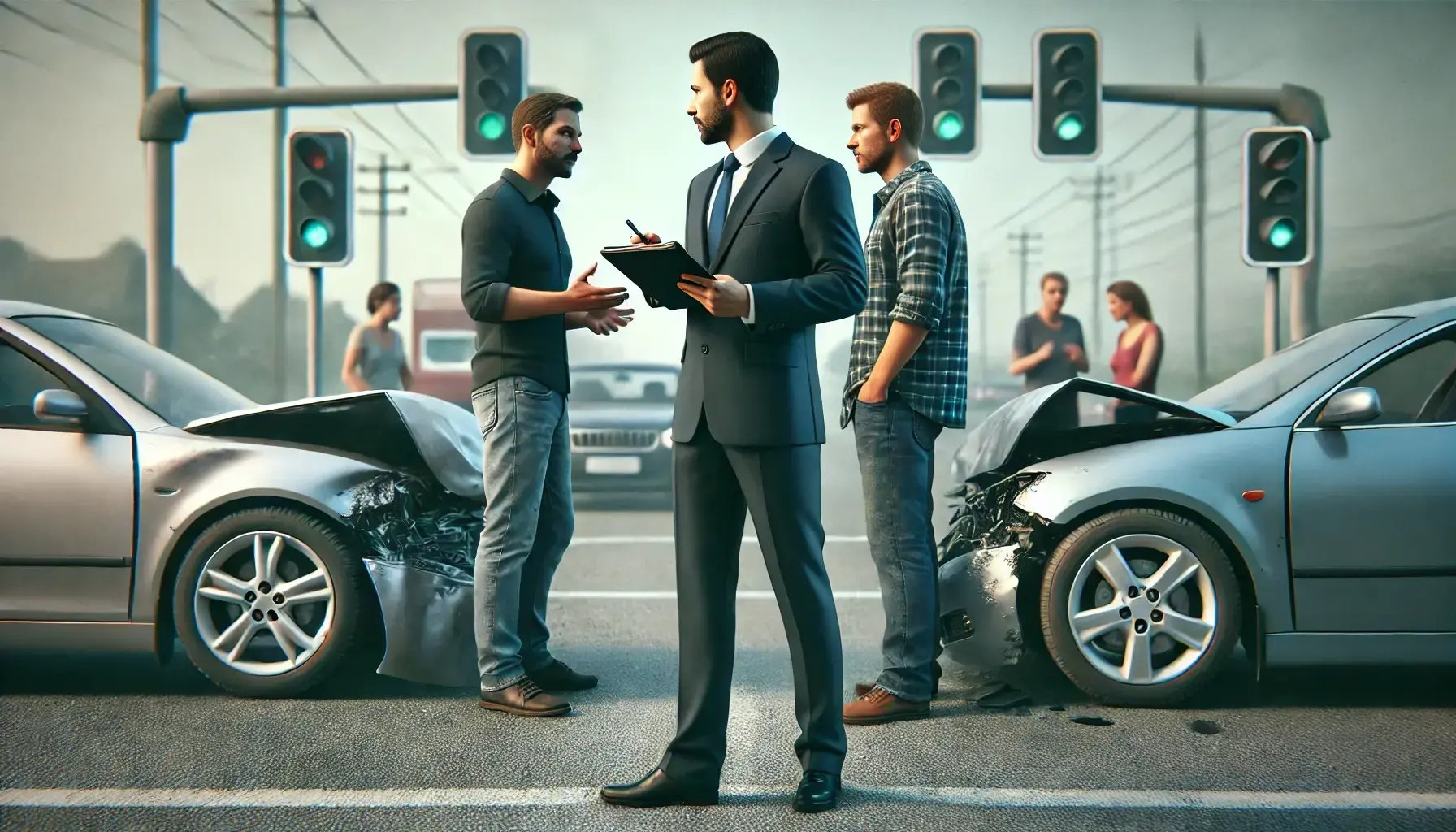
Following an accident, insurance claim adjusters will attempt to determine the responsibility each driver should bear. If either of the parties is also instituting legal action, the jury will have to decide the fault to be borne by each party. So, how is fault determined in these accidents?
The determining party will usually consider multiple factors to have a good understanding of the circumstances under which the accident occurred. The factors or elements that will be considered are:
Police reports
Where police reports are available for an accident, they are usually the weightiest evidence for a claims adjuster. This is because police reports are an objective, official, and third-party account of what happened by the law enforcement officer who investigated the accident.
These reports often contain every fact that an adjuster is interested in and usually mention who the law enforcement officer believes to be responsible.
However, police reports are not admissible evidence in lawsuits. Furthermore, they are not always available either because the accident does not meet the reporting requirements for that state or drivers simply refuse to report. In the absence of a police report, things will be relied on.
Driver’s version (supported with physical evidence)
Drivers will need to establish how the accident occurred from their respective points of view to establish why they believe another driver is responsible for an accident. In a court, drivers could testify about how they experienced the accident, and they should also narrate their version when making an insurance claim. The absence of discrepancies in the versions of events presented by both parties will definitively establish key facts.
To support a testimony or claim, a driver should gather physical evidence in the form of pictures and videos to support their version. To illustrate, if you are involved in an intersection accident because you believe you have the right of way, photos and videos that you use to support your version should show that you indeed have the right of way.
Pictures and videos should also show the damage and extent to both cars, injuries, road conditions, and weather conditions, if relevant.
Other witness accounts
Since other witnesses can also provide a more objective view of the accident, their perspective on what happened is invaluable in determining fault. Even when law enforcement investigates an accident, they endeavor to get witness statements for their report.
If you are involved in an accident, you should get the names and contact information of anyone who witnessed the accident. You should also obtain a dated and signed statement detailing what they saw if possible. These statements will significantly strengthen an insurance claim or a lawsuit.
Traffic laws
After establishing what happened in the moments leading up to the collision, determining fault often comes down to determining whether any of the drivers broke a traffic law and how that contributed to the accident. A driver may be awarded most of the fault for breaking major traffic laws, like driving while drunk, or minor ones, like failing to use turn signals when merging lanes.
When both drivers are found guilty of traffic violations, the fault is apportioned by considering the severity of the infraction and how each driver's violation contributed to the accident.
Insurance Implications
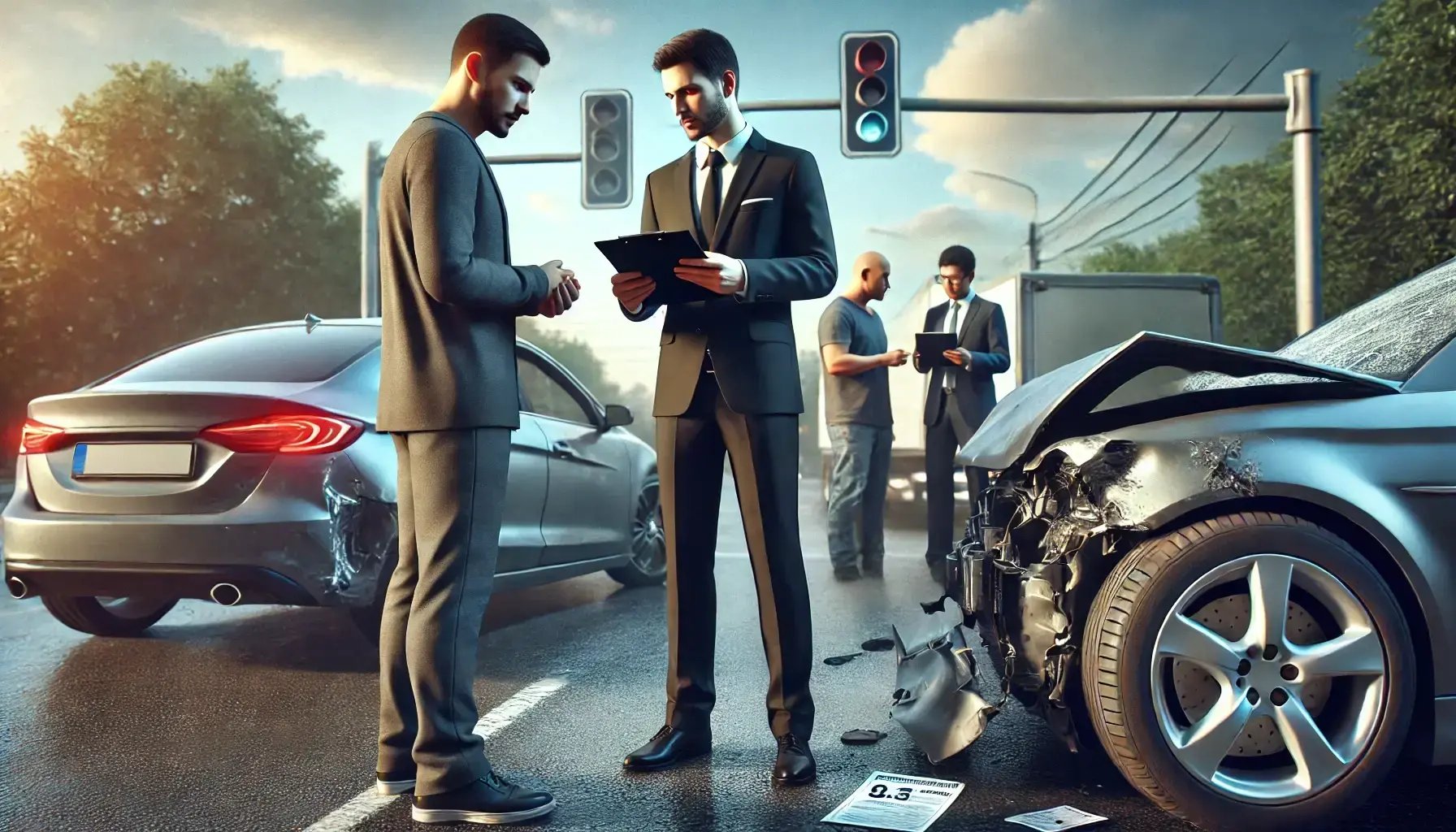
One of the most important things with shared fault accidents is figuring out whose insurance should pay. The state’s negligence laws significantly influence insurance settlements. So, if you are found to be 60% responsible for an accident by an adjuster in a modified comparative principle state, a third-party insurance claim will likely not yield anything.
For injuries in no-fault states, your insurance will pay. But if the injuries are excessive and above a state-specified level, you can bring legal action against the other driver to recover medical expenses, as long as the state does not follow comparative negligence.
For property damages generally and injuries in at-fault states, you can file a claim with the other driver's insurer, but you should still inform your insurer. After filing your claim, the other insurer will investigate.
However, since it is a shared fault accident, their findings may show that you bore enough responsibility to reduce your compensation to a meager amount or disqualify you from getting compensated entirely.
If you believe the other driver's insurance company is attempting to avoid paying you the settlement you deserve, you should inform your insurance company. They will enter into an arbitration or mediation process with the other driver's insurer to determine what proportion of fault each driver should bear.
Having a lawyer to represent you or communicate with the insurers on your behalf will increase your chances of obtaining a reasonable settlement.
After informing your insurer, you can claim with them for your injuries and damages while waiting for the results of the arbitration or mediation. But this will only be possible if you have other relevant auto insurance coverage plans with them.
Legal Consequences and Compensation
We have established that the legal consequences of both drivers sharing fault will vary across states, affecting a driver’s ability to receive compensation. The likely consequences are:
- None of the drivers will be able to recover in contributory negligence states.
- In pure comparative negligence states, both drivers will be entitled to compensation, but it will be reduced in proportion to their fault.
- In modified comparative negligence states with the 51% bar, the driver with most of the fault will not be entitled to compensation.
- In modified comparative negligence states with the 50% bar, compensation will not be allowed to the driver with most of the fault. However, when both drivers are equally responsible, they will not be entitled to compensation.
While these rules seem set, some exceptions and defenses may still be available to plaintiffs seeking compensation, like the last clear chance doctrine we discussed earlier. A good lawyer can help you present your claim or case so you stay within the threshold that bars you from receiving compensation.
Contact The Accident Helpers
Being involved in an accident where you are partly to blame can bring a lot of uncertainty. It's natural to be unsure how to proceed, what insurance company to file a claim with, and whether you should sue the other driver for compensation.
And if the other driver sues you, seeking compensation even though they were equally or even more responsible for the accident, it could cause you more uncertainty and anxiety.
This is why you need a lawyer. With an experienced lawyer skilled in personal injury accidents, dealing with insurance companies, and your state’s insurance laws, your chances of success increase drastically.
If you need help getting a lawyer, The Accident Helpers can help you! All you have to do is contact us. Our highly trained agents will obtain some critical details about the situation, and we’ll set you on your way to enjoying the peace of mind you deserve.


